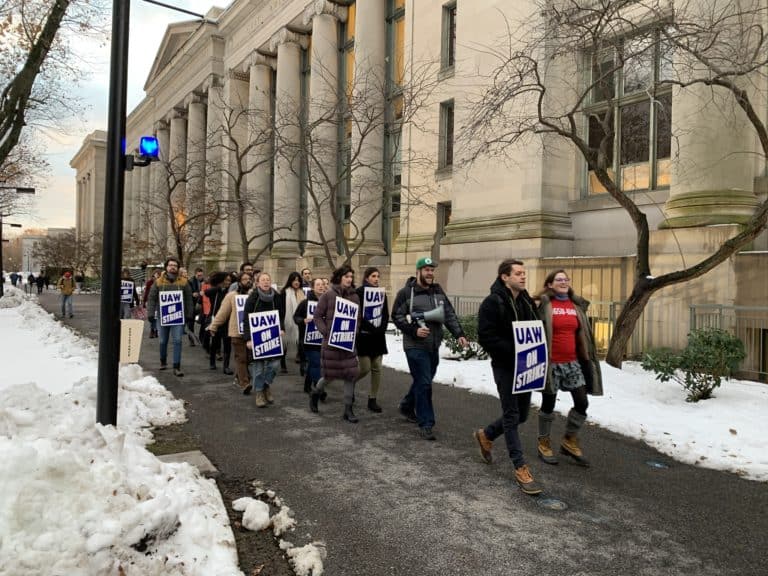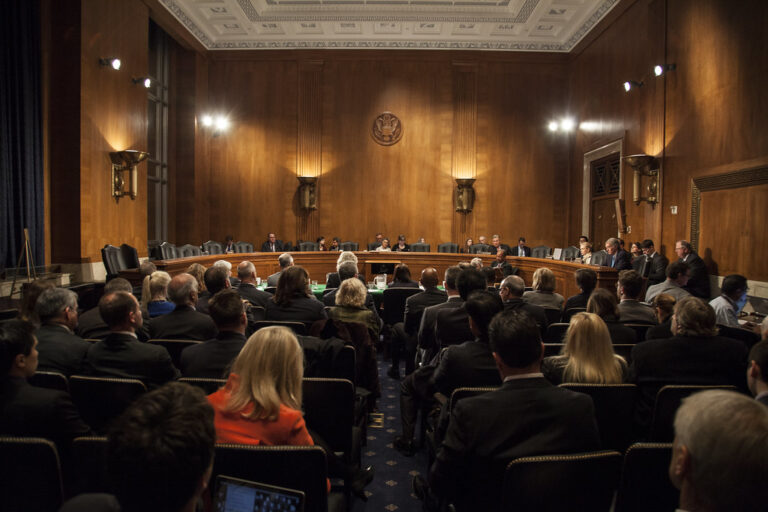Kamika Shaw is a student at Harvard Law School.
This January, Ohio adopted a firearm regulation commonly referred to as a parking lot law. The law’s core provision prevents both private and public employers from enforcing workplace policies that prohibit employees with concealed carry permits from keeping their firearms in their cars while in employer parking lots. Ohio’s law is not the first of its kind. Oklahoma was the first state to pass a parking lot law; it amended existing legislation in 2004 to protect firearm owners from prohibitions on firearms in workplace parking lots. As of 2016, more than 20 states have enacted similar parking lot provisions. Passed in response to robust lobbying campaigns by gun-rights groups such as the National Rifle Association, parking lot laws vary in the level of protection they offer gun owners, but most prohibit employers from asking employees if they own guns, and prohibit employers from firing employees because they own firearms. These laws are frequently in conflict with existing workplace policies, which often limit employee’s ability to bring firearms to work. These types of laws pose major questions about an employer’s ability create comprehensive health and safety policies. On purely legal grounds, it is difficult to conclusively say that state legislatures’ regulation of guns in the workplace is impermissible. However, parking lots laws undoubtedly raise significant questions about how much discretion employers should have in regulating employee conduct.
The Legal Landscape: OSHA’s General Duty Clause
The Occupational Health and Safety Act, which covers most private employers, promotes health and safety in the workplace. Covered employers are obligated to comply with health and safety standard promulgated by the Secretary of Labor pursuant to the statute. Other than this mandate, the OSH Act does not require that employers take specific actions or adopt specific policies to protect employee health and safety. Rather, the general duty clause of the OSH Act leaves the employer with some discretion to implement regulations it deems necessary to promote health and safety. Some private employers choose to place restrictions on employee’s abilities to bring guns into the workplace.
OSHA provides no specific standards or guidance for workplace violence; instead it places great weight on the general duty clause. In 2006, OSHA responded directly to a request for an OSHA policy banning guns from the workplace in an interpretive letter. The Directorate of Enforcement Programs avoided a specific ban on guns, and instead discussed more general workplace violence guidance. The DEP cited to a 1992 interpretive letter, stating that in workplaces where risk of violence and injury are high enough to be “recognized hazards” of employment, the general duty clause obliges employers to take “feasible steps” to minimize the chances of injury or violence. Failure to do so could be deemed an OSH Act violation. OSHA issued its first general directive on workplace violence in 2011; the directive outlined instructions for investigating instances of workplace violence. The directive reemphasizes the requirements from the 1992 guidance letter, stating that employers who fail to minimize “recognized hazards” may be found in violation of the general duty clause. As such, OSHA investigations into workplace violence can consider evidence pertaining to whether or not an employer recognized a risk that employees faced, and what feasible means the employer had of minimizing this risk. Since this directive, OSHA has issued guidance documents outlining more detailed measures employers could take to minimize work place violence in very specific employment settings, like health care and social services and in late night retail establishments. OSHA has still refrained from issuing any mandatory standards regulating workplace violence.
Cases: OSHA & Workplace Violence
OSHA’s lack of specific, mandatory standards may help explain why legal challenges to parking lot law have generally failed. In Florida Retail Federation v. Attorney General of Florida, the plaintiffs, an association of Florida business owners, articulated a common employer argument in favor of prohibiting guns on workplace property: guns increase the risk of accidental or intentional, unlawful shootings, and guns provide very few positive benefits in terms of deterring workplace violence. Many legislatures that enact parking lot provisions also cite workplace health and safety as the impetus for the regulations. The Oklahoma legislature claimed the amendments to its preexisting legislation were meant to promote public health and safety and deter crime. Florida’s parking lot law mentions self-defense as a rationale for enacting the law, implying that guns may improve, rather than threaten, safety in the workplace. In reaching its decision, the court frames its opinion in terms of how much the OSH Act constrains state legislatures. The OSH Act, the court determines, is “. . . not a general charter for courts to protect worker safety.” In light of the lack of guiding standards, the court concludes that the legislature is allowed to determine for itself whether or not guns in the workplace would improve or decrease workplace safety.
Other courts that have considered how the OSH Act interacts with parking lot laws have reached similar conclusions. Ramsey Winch, Inc. v. Henry considered whether the OSH Act preempted an Oklahoma parking lot law. The 10th Circuit reversed the lower court’s finding that the OSH Act did preempt the Oklahoma law. The court relies on states’ police powers, which are presumptively not preempted by federal law, unless federal legislation manifests a clear intent to do so. In reaching its decision, the court acknowledges that OSHA, through guidance documents and directives, has evinced an intent to reduce the risk of workplace injury in certain industries. However, the court notes that OSHA has promulgated no mandatory standards. The court uses the absence of specific provisions to infer a lack of congressional intent to interfere with the police power. In the absence of specific standards, the court turns to the recognized hazard provision of the general duty clause. The court reasons that the general duty standard does not provide a specific prohibition of guns in the work place, either. In support of its opinion, the court cites previous administrative decisions, which establish that potential violent behavior and a general fear of violent behavior is not sufficient to constitute a recognized hazard pursuant to the general duty clause.
Conclusion
Both OSHA and courts have demonstrated their inability to limit the scope of parking lot laws. The lack of legal recourse for employers who take issue with parking lot laws has significant implications for employers’ ability to regulate their workplaces. These types of laws may pass on significant burdens and costs to employers. Employers may feel the need to vet employees more extensively, which could increase costs incurred by employers, and raise privacy concerns on the part of employees. Furthermore, parking lot laws may increase security costs for employers who feel extra office security is needed to offset easier access to guns. More broadly, parking lot laws seem inconsistent with other rules regarding employer control over business property. For example, Lechmere, Inc. v. NLRB establishes that employers have the discretion to prohibit union organizers from soliciting employees in workplace parking lots. In light of precedent in other contexts, parking lot laws seem incongruous with general approaches to employer discretion to regulate the workplace. In any case, the presence of guns in the workplace will continue to be the source of fierce debate.






Daily News & Commentary
Start your day with our roundup of the latest labor developments. See all
November 25
In today’s news and commentary, OSHA fines Taylor Foods, Santa Fe raises their living wage, and a date is set for a Senate committee to consider Trump’s NLRB nominee. OSHA has issued an approximately $1.1 million dollar fine to Taylor Farms New Jersey, a subsidiary of Taylor Fresh Foods, after identifying repeated and serious safety […]
November 24
Labor leaders criticize tariffs; White House cancels jobs report; and student organizers launch chaperone program for noncitizens.
November 23
Workers at the Southeastern Pennsylvania Transportation Authority vote to authorize a strike; Washington State legislators consider a bill empowering public employees to bargain over workplace AI implementation; and University of California workers engage in a two-day strike.
November 21
The “Big Three” record labels make a deal with an AI music streaming startup; 30 stores join the now week-old Starbucks Workers United strike; and the Mine Safety and Health Administration draws scrutiny over a recent worker death.
November 20
Law professors file brief in Slaughter; New York appeals court hears arguments about blog post firing; Senate committee delays consideration of NLRB nominee.
November 19
A federal judge blocks the Trump administration’s efforts to cancel the collective bargaining rights of workers at the U.S. Agency for Global Media; Representative Jared Golden secures 218 signatures for a bill that would repeal a Trump administration executive order stripping federal workers of their collective bargaining rights; and Dallas residents sue the City of Dallas in hopes of declaring hundreds of ordinances that ban bias against LGBTQ+ individuals void.